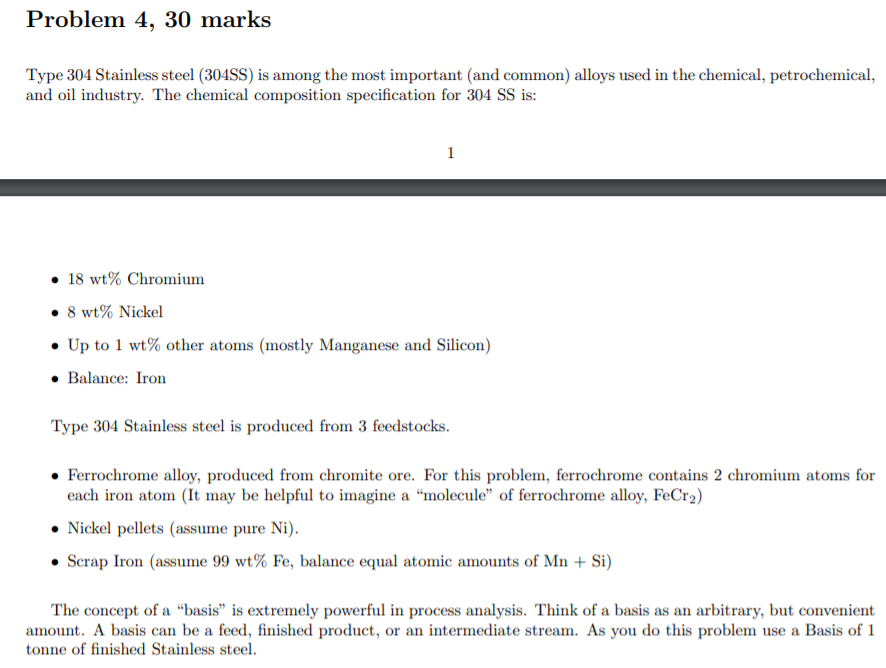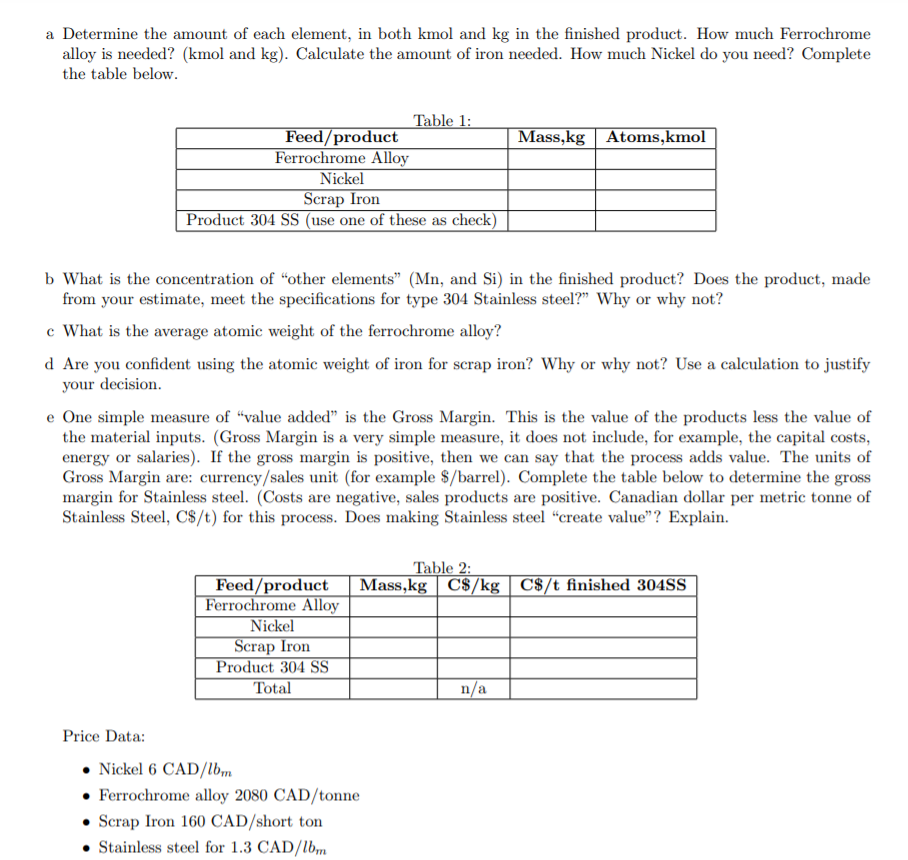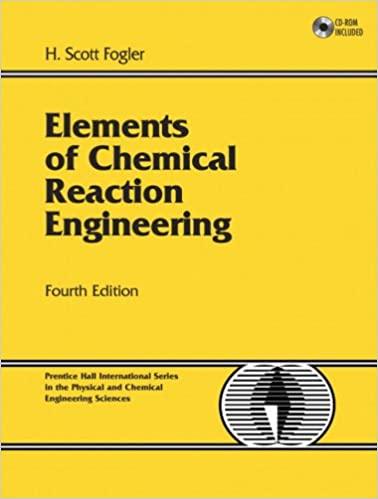
 please do part e)
please do part e)
Problem 4, 30 marks Type 304 Stainless steel (304SS) is among the most important and common) alloys used in the chemical, petrochemical, and oil industry. The chemical composition specification for 304 SS is: 1 18 wt% Chromium 8 wt% Nickel Up to 1 wt% other atoms (mostly Manganese and Silicon) Balance: Iron Type 304 Stainless steel is produced from 3 feedstocks. Ferrochrome alloy, produced from chromite ore. For this problem, ferrochrome contains 2 chromium atoms for each iron atom (It may be helpful to imagine a molecule of ferrochrome alloy, FeCr2) Nickel pellets (assume pure Ni). Scrap Iron (assume 99 wt% Fe, balance equal atomic amounts of Mn + Si) The concept of a "basis is extremely powerful in process analysis. Think of a basis as an arbitrary, but convenient amount. A basis can be a feed, finished product, or an intermediate stream. As you do this problem use a Basis of 1 tonne of finished Stainless steel. a Determine the amount of each element, in both kmol and kg in the finished product. How much Ferrochrome alloy is needed? (kmol and kg). Calculate the amount of iron needed. How much Nickel do you need? Complete the table below. Mass, kg Atoms,kmol Table 1: Feed/product Ferrochrome Alloy Nickel Scrap Iron Product 304 SS (use one of these as check) b What is the concentration of "other elements (Mn, and Si) in the finished product? Does the product, made from your estimate, meet the specifications for type 304 Stainless steel? Why or why not? c What is the average atomic weight of the ferrochrome alloy? d Are you confident using the atomic weight of iron for scrap iron? Why or why not? Use a calculation to justify your decision. e One simple measure of "value added is the Gross Margin. This is the value of the products less the value of the material inputs. (Gross Margin is a very simple measure, it does not include, for example, the capital costs, energy or salaries). If the gross margin is positive, then we can say that the process adds value. The units of Gross Margin are: currency/sales unit (for example $/barrel). Complete the table below to determine the gross margin for Stainless steel. (Costs are negative, sales products are positive. Canadian dollar per metric tonne of Stainless Steel, C$/t) for this process. Does making Stainless steel create value? Explain. Table 2: Mass, kg C$/kg C$/t finished 304SS Feed/product Ferrochrome Alloy Nickel Scrap Iron Product 304 SS Total n/a Price Data: Nickel 6 CAD/1bm Ferrochrome alloy 2080 CAD/tonne Scrap Iron 160 CAD/short ton Stainless steel for 1.3 CAD/lbm

 please do part e)
please do part e)





